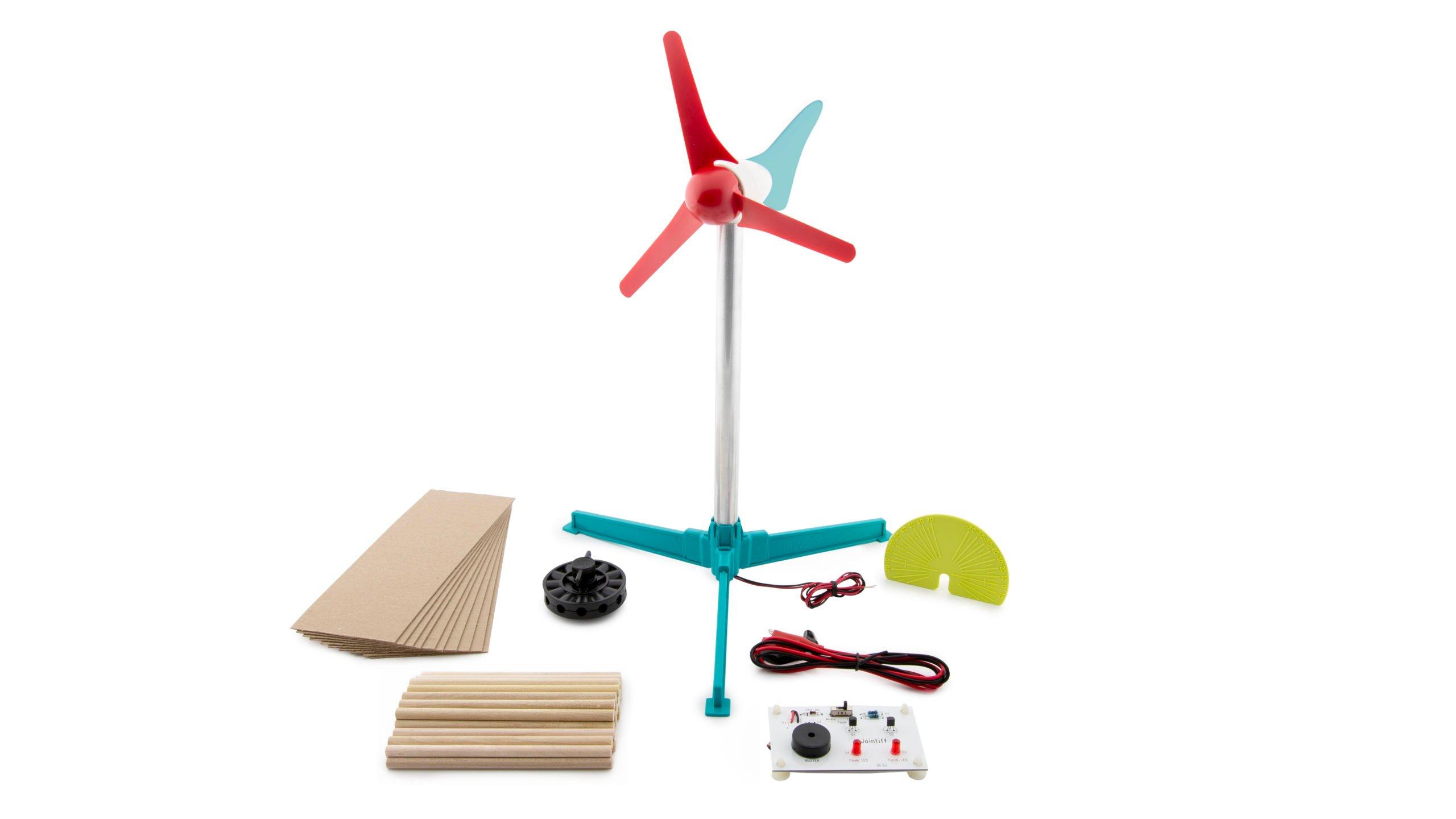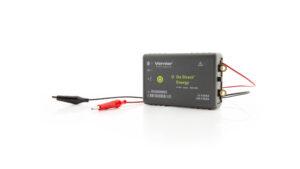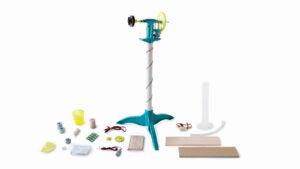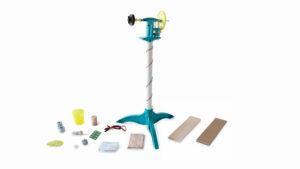The KidWind Mini Wind Turbine with Blade Design allows students to explore basic wind energy production and blade design concepts such as pitch, area, mass, quantity, and material on a desk using a small house fan. This kit is the recommended kit to use with Investigating Wind Energy.
The KidWind Mini Wind Turbine is a simple easy-to-build turbine with an optimally designed, efficient blade set that can light an LED bulb using a small house fan.
Specifications
- Height: 12 in
- Maximum blade diameter: 8 in (Mini Turbine), 16 in. (with blade design option)
- Expected power output: 0-1 watts
- Table of floor space needed: 6 in. diameter circle
View the KidWind MINI Wind Turbine user manual
What's Included
Mini Wind Turbine with Blade Design
- Mini Nacelle Assembly (1)
- 10″ Mini Aluminum Tower (1)
- Mini Base (1)
- Red Blade Set (1)
- Sound and Light Board (1)
- Red Alligator Clip Cord (1)
- Black Alligator Clip Cord (1)
- Wind Turbine Hub (1)
- 1/4″ x 5″ Dowels* (25)
- 3″ x 8″ Chipboard sheet* (10)
- Blade Pitch Protractor (1)
Mini Wind Turbine
- Mini Nacelle Assembly (1)
- 10″ Mini Aluminum Tower (1)
- Mini Base (1)
- Red Blade Set (1)
- Sound and Light Board (1)
- Red Alligator Clip Cord (1)
- Black Alligator Clip Cord (1)
* This part is a consumable and is excluded from warranty.
Note: The Mini Wind Turbine does not include a multimeter. You can measure current and voltage from the turbines using a Go Direct® Energy Sensor, and an optional Vernier Variable Load or Vernier Resistor Board.
Activities & Concepts
| ACTIVITY |
MINI WIND TURBINE WITH BLADE DESIGN |
MINI WIND TURBINE |
| Generate electricity |
● |
● |
| Light LEDs |
● |
● |
| Play a song |
● |
● |
| Measure the effects of windspeed |
● |
● |
| Measure turbine shading |
● |
● |
| Compare blade designs |
● |
|
| Investigate effect of changing number of blades |
● |
|
| Change blade pitch |
● |
|
| Measure power output |
● |
|
| CONCEPTS |
MINI WIND TURBINE WITH BLADE DESIGN |
MINI WIND TURBINE |
| Understanding clean energy |
● |
● |
| Exploring energy transformations |
● |
● |
| Understanding the relationship between energy and forces |
● |
● |
| Developing and using physical models |
● |
|
| Understanding differences between energy and power |
● |
|
| Collecting data with advanced tools |
● |
|
| Analyzing and interpreting data |
● |
|
| Using mathematics to explain and understand data |
● |
|
| Designing controlled experiments |
● |
|
| Optimizing designs |
● |
|
Lessons, Tips, and Challenges
Download lessons, learn tips for building turbines, and check out the KidWind challenges.
Go to KidWind.org





